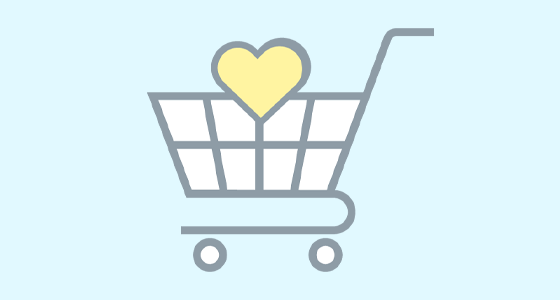If you want to crack the code of how to increase online sales, you need to tap into the minds of your customers. Human psychology, and particularly the psychology of selling, can and should play a key role as you develop strategies to increase your sales.
With that in mind, here are six quirks of human psychology that are worth incorporating into your customer-facing operations and decision-making.
1. Creating a Sense of Urgency
Urgency is an incredibly powerful force in the realm of human psychology, as Marketing Land contributor Nail Patel explained. When people feel urgency, they are more likely to take action quickly. For shoppers, that action is likely to be a purchase. Without urgency, the desire for a product or service may pass, resulting in a missed sales opportunity.
Patel went on to note that there are a number of different ways by which retailers can increase the sense of urgency among their customers. One obvious example: You can emphasize the scarcity of whatever it is that you are offering. If consumers see that there are only so many of the product available, they’ll realize they need to buy now, rather than wait and reconsider.
Another option is to use deadlines. Limited-time offers or time-dependent availability can further reinforce the idea that shoppers have to act now if they want to get ahold of your products.
2. Avoiding Choice Overload
As choice in certain venues has proliferated, studies have been done to determine how that evolution impacts sales. And the studies have shown that choice overload can have a negative impact on your bottom line.
Choice overload is the concept that too many choices can deter sales because it yields indecision. A study by Episerver shows 46 percent of buyers have abandoned a cart because of indecision over too many choices.
This doesn’t mean you can’t stock lots of SKUs, especially in the B2B world where you may have no choice. But you can make the number of choices lower by helping your buyers filter down to what’s important through techniques like category groupings, filters that link to a product or an attribute like size components, and other situations that can focus your buyers in on the exact item(s) they need, or small selection that makes a choice much easier.
3. Leverage Price Anchoring
Anchoring is the common practice in which you offer several options for a given product, then use the pricing structure to encourage customers to opt for the more expensive option.
To illustrate the theory in practice, Zack Fagan in a blog post presented the example of Apple’s pricing model for devices. At the time, Apple offered a 16GB iPod for $199, a 32GB for $249 and a 64GB for $299. As the writer asserted, it’s hard to imagine too many customers opting for the 32GB option, even if that would best suit their needs. Instead, they’ll be drawn to the 64GB iPod, as it’s double the storage but only $50 more.
In this case, the 32GB serves as an anchor for the higher price product. Without that option, customers may well be a lot more likely to opt for the less expensive iPod.
4. Create a Perception of Novelty
One last psychological quirk to utilize is the fact that people are drawn to novelty, as Neil Patel wrote. He noted that neurologists have discovered that exposure to the unfamiliar and new releases dopamine in the brain – people get pleasure from novelty. By emphasizing novelty in your online store through new products, promotions and spotlights, you can excite your shoppers and drive greater sales.
5. Lean Into Digital Storytelling
We all love a good story. And digital storytelling can have a positive impact on driving sales by developing a narrative that helps your buyers visualize how a product will be used and the value it derives.
Todd Kunsman at Everyone Social notes that digital storytelling has the value of offering an authentic human experience and cutting through inauthentic advertisements and other noise.
6. Let Your Customers Do the Talking
If digital storytelling offers a way to share authentic experiences, customer reviews and other social proof take that a step further by allowing your own customers to share their own stories, offering a third-party booster to the messages you’re offering.
Social proof can take a variety of forms, including case studies, testimonials, reviews, trust icons and social media posts. The ways to collect and display social proof has evolved and expanded rapidly, so there are plenty of tools to help make such an effort viable, even for small businesses.
Here at Zoey, we have reviews from our store owners right on our homepage, and use other forms of social proof, like testimonials and case studies, throughout our site.
7. Utilizing The Left-Digit Effect
Ever wonder why many companies price products with a .99 price point? It’s because psychologically buyers in many situations focus on and remember the number to the left of the decimal, not the right. So 2.99 seems more appealing than 3.00, even though they’re virtually the same.
This is known as the “left-digit effect,” and is a topic researched periodically to see when, how and why purchasers are impacted by this.
For B2B businesses selling in volume, price competition can be quite often an aspect of how one vendor is chosen from another, so ensuring any advantage that can be gained, even from a psychological of selling point of view, can be impactful.
Leverage These Techniques on Zoey
Before you can use psychology to your advantage, you should make sure you have a solution that can handle your business. Ready to adopt a B2B Ecommerce solution that lets you sell anytime, anywhere on any device? Click the button below to request a conversation with our team:





